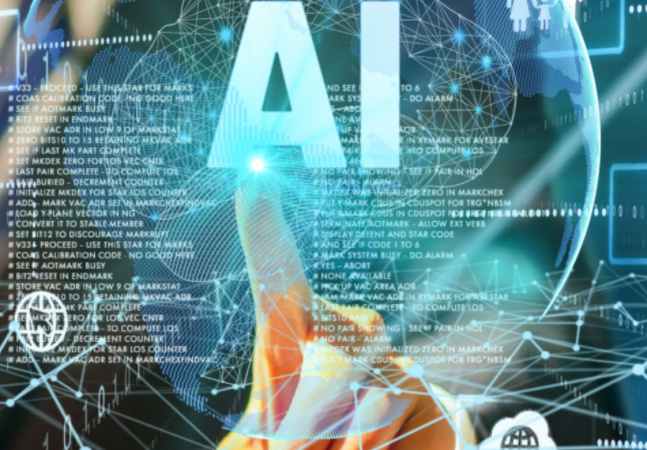AI Detector: Operation and Significance in the Digital Age

We are living in an era of rapid change in all fields of life, thanks to the continuous advancement of artificial intelligence (AI). With the advance of AI generation, we will need to prove who is writing these sentences as they get better and better and more convincing. This is where an AI detector comes in. AI detectors are tools that analyze text, images and other digital content to determine whether it has been created by a human or by AI. In this article, we will take a look at how AI detectors operate, their purpose, and the reason why they are significant in today’s digital world.
How AI Detectors Work
An AI detector analyzes the patterns of content by using advanced machine learning models and natural language processing (NLP) techniques. These tools were trained using massive datasets with human-written and AI-generated text, helping them understand slight differences between the two.
Here are some important dimensions AI detectors are analyzing:
Lack of Coherence and Predictability – AI-based text relies on statistical probabilities, not true human creativity, so it often follows predictable patterns.
Repetitive/Generic Language – AI models often use the same few phrases and sentence structures to spit out sentences, which makes it easier to detect.
Perplexity and Burstiness – AI-generated text usually has lower perplexity (predictability) and lower burstiness (variance in sentence lengths) than human writing.
Analysis of Grammar and Syntax – While AI models compose grammatically accurate text, they also tend to use weird word selection, comparing an AI detector can capture.
Metadata and Digitial Fingerprints — Certain AI-generated content leaves metadata breadcrumbs that detectors can examine.
The detection methods assist in ensuring the integrity of digital material on various platforms.
Applications of AI Detectors
AI Detectors being widely adopted in different Industries Here are some of the many areas in which they are essential:
Academic Integrity
Schools are deploying AI detectors to stop students from handing in essays and homework generated using AI. Software programs like Turnitin and GPTZero help professors and educators ensure students are producing original work, maintain academic integrity.
Content verification — journalism — of sorts.
As the number of AI-written news articles and fake news increases, journalists and media firms employ AI detectors to check the authenticity of the content. This ensures that misinformation is curbed, and news is report with its utmost credibility.
SEO and Digital Marketing
Search engines, such as Google, rewards great quality human written information. AI detectors also assist businesses and marketers in ensuring that their content adheres to SEO best practices and does not get categorized as low-grade AI-generated information. This is key to keeping search rankings and visibility online.
Fraud Detection in Business
In the corporate world, AI detectors identify AI-generated financial reports; fraudulent emails; and deepfake content. These prevent businesses from falling prey to scam emails and ensure data safety.
Legal and Compliance Sectors
AI detectors help legal professionals validate the authenticity of legal documents, including contracts, agreements, and other legal papers to ensure they are not AI-generated or tampered with.
Limitations of AI Detectors and Possible Challenges
Well, AI detectors are powerful tools but they can’t guarantee foolproof. Some of it is sophisticated enough that even advanced detectors struggle to identify it. Plus, AI detection tools can on occasion generate false positives, mistakenly identifying human-written material as AI-generated.
However, to combat these issues, scholars continue to develop more sophisticated AI detection algorithms through enhanced data training, improved NLP methodologies, and even utilizing AI to identify AI-generated text.
The Future of AI Detection
AI detection tools will evolve along with AI technology. Many some combination of blockchain verification, better known linguistic analysis, and better AI detection framework will come next. As the battle between AI-generated content and AI detectors continues, businesses, educators and content creators must keep an eye on the latest developments in AI detection capabilities.
Ethical Considerations in AI Detection
As AI detectors become more advanced, ethical concerns arise regarding their usage and accuracy. There is an ongoing debate about privacy, data security, and the potential consequences of false positives. For instance, a student or writer may be wrongly accuse of using AI-generated content, impacting their reputation and credibility. Therefore, it is crucial to use AI detectors responsibly and in combination with human judgment. Additionally, transparency in AI detection algorithms is essential to ensure fairness and prevent bias. As AI technology continues to shape the digital world, ethical AI detection practices will play a significant role in balancing innovation with integrity.
Conclusion
This has led to a need for AI detectors that are capable of identifying whether a human or machine wrote a post, and the increasing popularity of AI content. They are critical for education, journalism, SEO, fraud detection and legal compliance. Although it is still evolving, AI detection is now an integral part of the digital space. This article is for anyone who wants to stay on top of AI detection tech in order to retain the authenticity and trustworthiness of content in an AI-dominated world.










